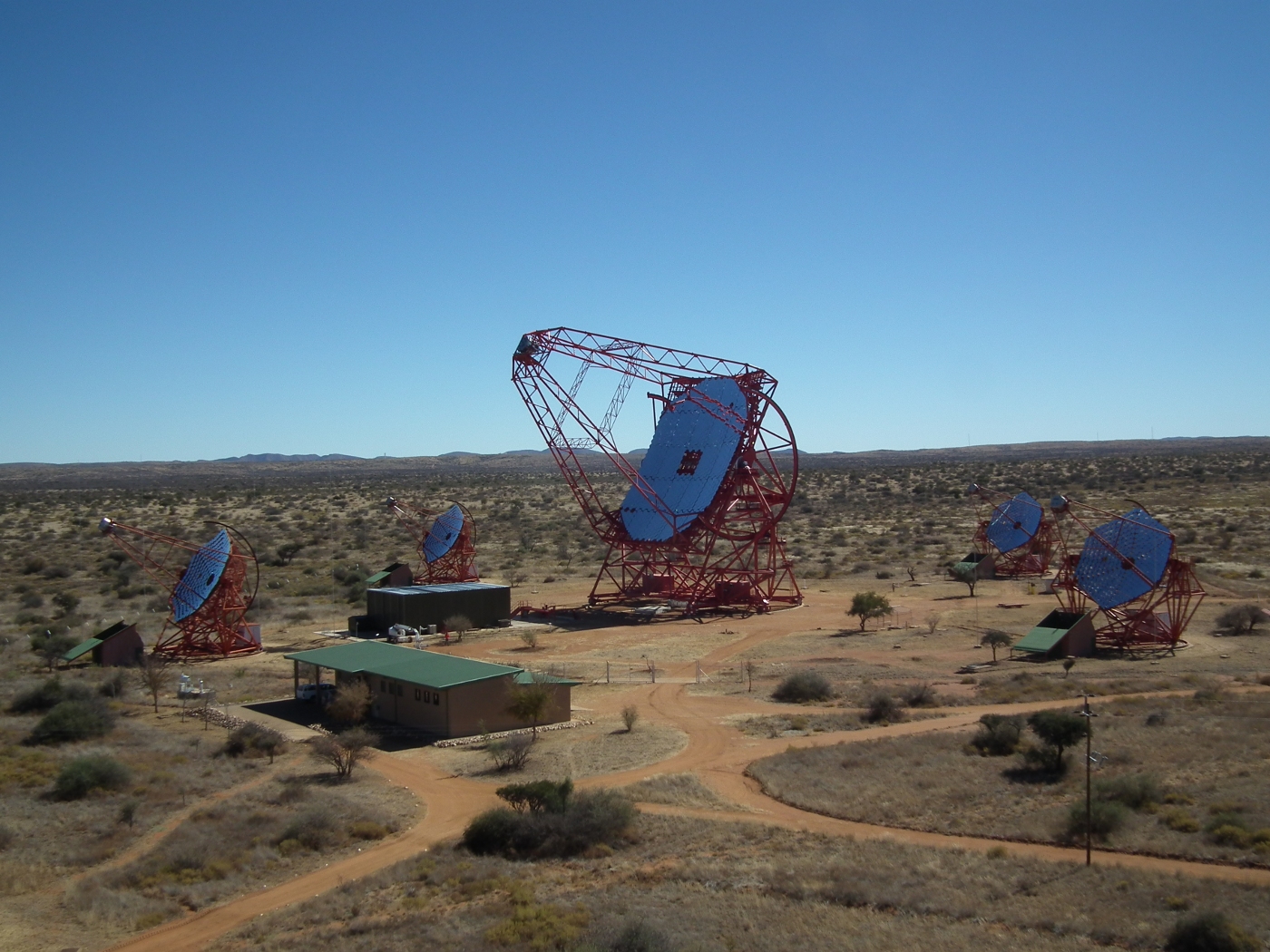Astronomy Object of the Month: 2018, August
< previous Archive next >
TXS 0506+56: discovery of an energetic cosmic neutrino source due to very high energy gamma ray observations
On September 22nd last year the Ice Cube Neutrino Observatory at the South
Pole detected a high energy neutrino with a likely cosmic origin. A single neutrino does not suffice to identify its source. Very soon after
its detection telescopes working at different wavelengths of the electromagnetic spectrum started to observe the possible location it came from.
 Telescopes of the H.E.S.S. observatory in Namibia. Credit: H.E.S.S.
Telescopes of the H.E.S.S. observatory in Namibia. Credit: H.E.S.S.
Already 4 hours after the first detection the H.E.S.S. telescope located in Namibia started the observations. It was soon followed by VERITAS telescope (Arizona, USA), which started observing the suspected area 12 hours after the alert. Next day the MAGIC telescope (Spain, Canary Islands) joined the campaign. These initial observations provided upper limits on the brightness of the source. The MAGIC telescope continued the monitoring campaign until October 4th, observing for a total of 13 hours. During these observations the source brightened up and became clearly detectable. An article on this important discovery was recently published in the journal Science.
The observations that were performed also with the telescopes sensitive on electromagnetic waves starting from the radio bands all the way to the very high energy gamma-rays indicate that the source is the TXS 0506+56 galaxy located about 4 billion light years away. The galaxy is a blazar hosting accreting black hole which launches powerful jets of matter at speeds close to the speed of light. We observe blazars along the jet direction. Particles are accelerated to high energies in the jets, however observing only gamma rays does not allow to distinguish whether they are electrons, protons, or even heavier atomic nuclei. Fast protons collide with the particles of the interstellar gas creating pions, which in turn decay emitting neutrinos.
The discovery of gamma rays along with neutrinos is extremely exciting, because their origin must be connected with the acceleration of cosmic rays. The origin of cosmic rays has been a puzzle for more than 100 year since their discovery. The observation of gamma rays and neutrinos indicates that blazars host environments where cosmic rays are formed, providing the direct evidence for the existence of a cosmic proton accelerators in these objects. The present discovery is another success of the multimessenger astronomy, a new branch of astrophysics which connects not only observations at different wavelengths, but also those with different types of radiation: electromagnetic waves, neutrinos, cosmic rays and gravitational waves.
There is a big Polish group of astronomers and physicists participating in gamma ray observations of the Universe. Scientists from UJ as well as from UW, CAMK PAN, UMK and IFJ PAN take part in the H.E.S.S. observatory operation and data analysis, and a group from UŁ takes part in the MAGIC observatory.
Original publication: The IceCube Collaboration, Fermi-LAT, MAGIC, AGILE, ASAS-SN, HAWC, H.E.S.S., INTEGRAL, Kanata, Kiso, Kapteyn, Liverpool Telescope, Subaru, Swift/NuSTAR, VERITAS, VLA/17B-403 teams: Multimessenger Observations of a flaring blazar coincident with high energy neutrino IceCube-170922A, Science, 13 July 2018.
The project is part of research conducted at the Department of High Energy Astrophysics of the Jagiellonian University’s Astronomical Observatory (OAUJ). The research team from OAUJ included: Michał Ostrowski, Marek Jamrozy, Natalia Żywucka-Hejzner and Angel Priyama Noel.
|
Michał Ostrowski Astronomical Observatory Jagiellonian University Michal.Ostrowski [at] uj.edu.pl |


